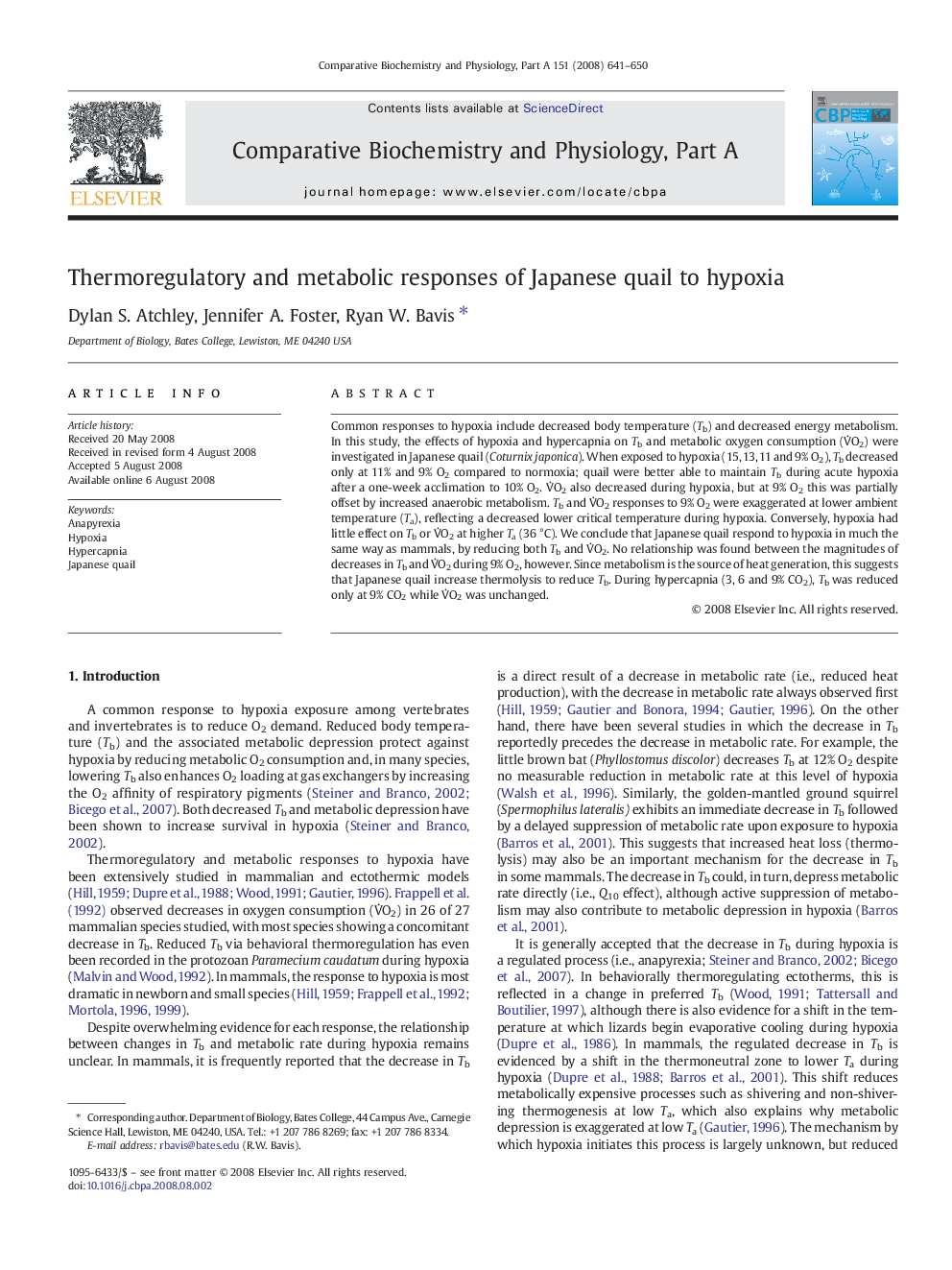| Article ID | Journal | Published Year | Pages | File Type |
|---|---|---|---|---|
| 1973399 | Comparative Biochemistry and Physiology Part A: Molecular & Integrative Physiology | 2008 | 10 Pages |
Abstract
Common responses to hypoxia include decreased body temperature (Tb) and decreased energy metabolism. In this study, the effects of hypoxia and hypercapnia on Tb and metabolic oxygen consumption (V.O2) were investigated in Japanese quail (Coturnix japonica). When exposed to hypoxia (15, 13, 11 and 9% O2), Tb decreased only at 11% and 9% O2 compared to normoxia; quail were better able to maintain Tb during acute hypoxia after a one-week acclimation to 10% O2. V.O2 also decreased during hypoxia, but at 9% O2 this was partially offset by increased anaerobic metabolism. Tb and V.O2 responses to 9% O2 were exaggerated at lower ambient temperature (Ta), reflecting a decreased lower critical temperature during hypoxia. Conversely, hypoxia had little effect on Tb or V.O2 at higher Ta (36 °C). We conclude that Japanese quail respond to hypoxia in much the same way as mammals, by reducing both Tb and V.O2. No relationship was found between the magnitudes of decreases in Tb and V.O2 during 9% O2, however. Since metabolism is the source of heat generation, this suggests that Japanese quail increase thermolysis to reduce Tb. During hypercapnia (3, 6 and 9% CO2), Tb was reduced only at 9% CO2 while V.O2 was unchanged.
Related Topics
Life Sciences
Biochemistry, Genetics and Molecular Biology
Biochemistry
Authors
Dylan S. Atchley, Jennifer A. Foster, Ryan W. Bavis,
